 W
WThe Texas–Indian wars were a series of 19th-century conflicts between settlers in Texas and the Southern Plains Natives. These conflicts began when the first wave of European-American settlers moved into Spanish Texas. They continued through Texas's time as part of Mexico, when more Europeans and Anglo-Americans arrived, to the subsequent declaration of independence by the Republic of Texas. The conflicts did not end until thirty years after Texas joined the United States.
 W
WThe First Battle of Adobe Walls was a battle between the United States Army and American Indians. The Kiowa, Comanche and Plains Apache tribes drove from the battlefield a United States Expeditionary Force that was reacting to attacks on white settlers moving into the Southwest. The battle, on November 25, 1864, resulted in light casualties on both sides but was one of the largest engagements fought on the Great Plains.
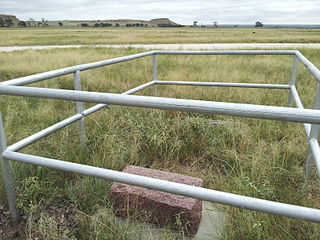 W
WThe Second Battle of Adobe Walls was fought on June 27, 1874, between Comanche forces and a group of 28 U.S. bison hunters defending the settlement of Adobe Walls, in what is now Hutchinson County, Texas. "Adobe Walls was scarcely more than a lone island in the vast sea of the Great Plains, a solitary refuge uncharted and practically unknown."
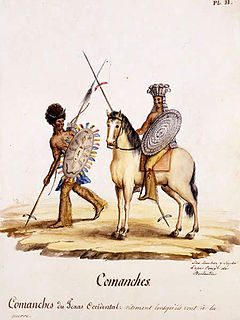 W
WThe Antelope Hills expedition was a campaign from January to May 1858 by the Texas Rangers and members of other allied Native American tribes against Comanche and Kiowa villages in the Comancheria. It began in West Texas and ended in a series of fights with the Comanche tribe on May 12, 1858, at a place called Antelope Hills by Little Robe Creek, a tributary of the Canadian River in what is now Oklahoma. The hills are also called the "South Canadians", as they surround the Canadian River. The fighting on May 12, 1858, is often called the Battle of Little Robe Creek.
 W
WThe Battle of the San Gabriels was an 1839 skirmish in the Texas–Indian wars.
 W
WBig Tree (Kiowa: Ado-ete, was a noted Kiowa warrior and chief. He was a loyal follower of the fighting chiefs party, and conducted frequent raids upon other tribes and white settlers, often being associated with Tsen-tainte.
 W
WJohn Bigelow Jr. was a United States Army lieutenant colonel. He was the subject of many articles on military frontier life in Outing Magazine published by his brother Poultney Bigelow and with sketches drawn in the field by the then young and obscure Frederic Remington. The book Frontier Cavalryman is based on his journals and service with the Buffalo Soldiers. He received a Silver Star and a Purple Heart for his actions in Cuba. He was assigned as a superintendent of Yosemite National Park in early 1904 and retired from the Army the following September. He became a teacher at the Massachusetts Institute of Technology and later an author of several books. He was recalled to active duty in World War I and served in Washington, District of Columbia until 1919. He retired again and died in 1936 at age 81.
 W
WBird's Fort was a community north of present-day Arlington, Texas (USA). In 1841, when John Neely Bryan established Dallas, he invited the settlers at Bird's Fort to come live in his proposed city.
 W
WThe Battle of Blanco Canyon was the decisive battle of Col. Ranald S. Mackenzie's initial campaign against the Comanche in West Texas, and marked the first time the Comanches had been attacked in the heart of their homeland. It was also the first time a large military force explored the heart of Comancheria. On 12 August 1871 Mackenzie and Colonel Benjamin Grierson were asked by Indian Agent Lawrie Tatum to begin an expedition against the Kotsoteka and Quahadi Comanche bands, both of whom had refused to relocate onto a reservation after the Warren Wagon Train Raid. Col. Mackenzie assembled a powerful force consisting of eight companies of the Fourth United States Cavalry, two companies of the Eleventh Infantry, and a group of twenty Tonkawa scouts.
 W
WThe Buffalo Hunters' War, or the Staked Plains War, occurred in 1877. Approximately 170 Comanche warriors and their families led by Quohadi chief Black Horse or Tu-ukumah left the Indian Territory in December, 1876, for the Llano Estacado of Texas. In February, 1877, they, and their Apache allies, began attacking buffalo hunters' camps in the Red River country of the Texas Panhandle, killing or wounding several. They also stole horses from the camp of Pat Garrett.
 W
WThe Buffalo Soldier Tragedy of 1877, also known as the Staked Plains Horror, occurred when a combined force of Buffalo Soldier troops of the 10th Cavalry and local buffalo hunters wandered for five days in the near waterless Llano Estacado region of northwest Texas and eastern New Mexico during July of a drought year, where four soldiers and one buffalo hunter died.
 W
WMatthew Caldwell,, also spelled Mathew Caldwell was a 19th-century Texas settler, military figure, Captain of the Gonzales – Seguin Rangers and a signer of the Texas Declaration of Independence. Because of his recruitment ride ahead of the Battle of Gonzales, some call him the Paul Revere of Texas.
 W
WLouis Henry Carpenter was a United States Army brigadier general and a recipient of the Medal of Honor for his actions in the American Indian Wars.
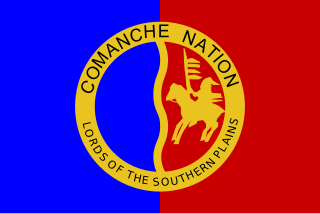 W
WThe Comanche or Nʉmʉnʉʉ are a Native American nation from the Great Plains of the present-day United States. Their historic territory consisted of most of present-day northwestern Texas and adjacent areas in eastern New Mexico, southeastern Colorado, southwestern Kansas, western Oklahoma, and northern Chihuahua. Within the United States, the government federally recognizes the Comanche people as the Comanche Nation, headquartered in Lawton, Oklahoma. The Comanche language is a Numic language of the Uto-Aztecan family. It was originally a Shoshoni dialect, but has diverged over time to become a separate language.
 W
WThe Comanche Wars were a series of armed conflicts fought between Comanche peoples and Spanish, Mexican, and American militaries and civilians in the United States and Mexico from as early as 1706 until at least the mid-1870s. The Comanche were the Native American inhabitants of a large area known as Comancheria, which stretched across much of the southern Great Plains from Colorado and Kansas in the north through Oklahoma, Texas, and eastern New Mexico and into the Mexican state of Chihuahua in the south. For more than 150 years, the Comanche were the dominant native tribe in the region, known as “the Lords of the Southern Plains”, though they also shared parts of Comancheria with the Wichita, Kiowa, and Kiowa Apache and, after 1840, the southern Cheyenne and Arapaho.
 W
WThe Council House Fight, often referred to as the Council House Massacre, was a decidedly lopsided fight between soldiers and officials of the Republic of Texas and a delegation of Comanche chiefs during a peace conference in San Antonio on March 19, 1840. The meeting took place under an observed truce with the purpose of negotiating the exchange of captives and ultimately facilitating peace after two years of war. The Comanches sought to obtain recognition of the boundaries of the Comancheria, their homeland, while the Texians wanted the release of Texian and Mexican citizens held prisoner by the Comanches.
 W
WDohäsan, Dohosan, Tauhawsin, Tohausen, or Touhason was a prominent Native American. He was War Chief of the Kata or Arikara band of the Kiowa Indians, and then Principal Chief of the entire Kiowa Tribe, a position he held for an extraordinary 33 years. He is best remembered as the last undisputed Principal Chief of the Kiowa people before the Reservation Era, and the battlefield leader of the Plains Tribes in the largest battle ever fought between the Plains tribes and the United States.
 W
WThe Great Raid of 1840 was the largest raid ever mounted by Native Americans on white cities in what is now the United States. It followed the Council House Fight, in which Republic of Texas officials attempted to capture and take prisoner 33 Comanche chiefs who had come to negotiate a peace treaty, killing them together with two dozen of their family and followers. The Comanche tribe was supposed to have brought white hostages as their part of the negotiations but only brought one young woman. Arguments and fighting then broke out among the Texans and Comanches. The Texas Officials were determined to force the Comanche to release all white captives among them. To avenge what the Comanche viewed as a bitter betrayal by the Texans, the Comanche war chief Buffalo Hump raised a huge war party of many of the bands of the Comanche, and raided deep into white-settled areas of Southeast Texas.
 W
WGuipago was the last Principal Chief of the Kiowa tribe. He was a member of the Koitsenko, the Kiowa warrior elite, and was a signer of the Little Arkansas Treaty in 1865.
 W
WThe Killough Massacre is believed to have been both the largest and last Native American attack on white settlers in East Texas.
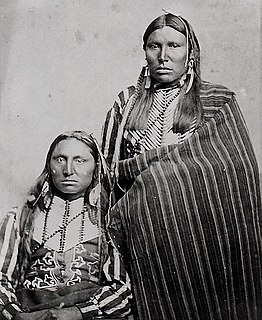 W
WThe Battle of Little Robe Creek, also called the Battle of Antelope Hills, took place on May 12, 1858. It actually was a series of three distinct encounters that took place on a single day, between the Comanches, with Texas Rangers, militia, and allied Tonkawas attacking them. It was undertaken against the laws of the United States at the time, which strictly forbade such an incursion into the Indian Territories of Oklahoma, and marked a significant escalation of the Indian Wars. It also marked the first time American or Texas Ranger forces had penetrated the Comancheria as far as the Wichita Mountains, and Canadian River, and it marked a decisive defeat for the Comanches.
 W
WThe Battle of Lyman's Wagon Train was an incident in 1874, near Canadian, Texas. A 343 acres (139 ha) area at the site was listed on the National Register of Historic Places in 2001 for its information potential as an archeological site. As an archeological resource, the National Register does not disclose the location of the site.
 W
WThe Meusebach–Comanche Treaty was a treaty made on May 9,1847 between the private citizens of the Fisher–Miller Land Grant in Texas, who were predominantly German in nationality, and the Penateka Comanche Tribe. The treaty was officially recognized by the United States government. In 1936, a Recorded Texas Historic Landmark, Marker number 991, was placed in San Saba County to commemorate the signing of the treaty.
 W
WMow-way, was the principal leader and war chief of the Kotsoteka band of the Comanche during the 1860s and 1870s, following the deaths of Kuhtsu-tiesuat in 1864 and Tasacowadi in 1872.
 W
WRobert Simpson Neighbors was an Indian agent and Texas state legislator. Known as a fair and determined protector of Indian interests as guaranteed by treaty, he was murdered for his beliefs by a Texan who disagreed with giving any rights to the Comanches.
 W
WNicholas Merritt Nolan was a United States Army major. An Irish immigrant, he began his military career in New York on December 9, 1852 with the 4th Artillery, and subsequently served in New York's 2nd Dragoons. He enlisted as a private and rose through the ranks becoming a first sergeant. He was commissioned an officer in late 1862 in the Regular Army, while serving with the 6th U.S. Cavalry Regiment during the American Civil War. He participated in 16 campaigns with the 6th and most of its battles. He was slightly wounded at the Battle of Fairfield and seriously wounded at the Battle of Dinwiddie Court House. He was brevetted twice and noted at least twice for gallantry during combat. He was slightly wounded when captured at the end of March 1865, and was later paroled. After the Civil War, he served with the 10th U.S. Cavalry, known as the Buffalo Soldiers, for 14 years. Nolan is also noted for his pluses and minuses during the Buffalo Soldier tragedy of 1877 that made headlines in the Eastern United States. He was the commanding officer of Henry O. Flipper in 1878, the first African American to graduate from the United States Military Academy at West Point. He commanded several frontier forts before his untimely death in 1883.
 W
WThe Battle of North Fork or the Battle of the North Fork of the Red River occurred on September 28, 1872, near McClellan Creek in Gray County, Texas, United States. A monument on that spot marks the site of the battle between the Comanche Indians under Kai-Wotche and Mow-way and a detachment of cavalry and scouts under U.S. Army Colonel Ranald S. Mackenzie. There was an accusation that the battle was really an attempt "to make a massacre," as during the height of battle some noncombatants were wounded while mixed in with warriors.
 W
WThe Battle of Palo Duro Canyon was a military confrontation and a significant United States victory during the Red River War. The battle occurred on September 28, 1874 when several U.S. Army regiments under Ranald S. Mackenzie attacked a large encampment of Plains Indians in Palo Duro Canyon in the Texas Panhandle.
 W
WThe Fort Parker massacre of May 1836, also known as the Fort Parker raid, was an event in which U.S. settlers of the Parker family were killed in an attack by a contingent of Comanche, Caddo, and Wichita fighters. During the attack, Cynthia Ann Parker, then 9-years-old, was captured and spent most of the rest of her life within the Comanche Nation, later marrying Chief Peta Nocona and giving birth to a son, Quanah Parker, who would become a prominent leader of the Comanches and a war leader during the Red River War of 1874–75. Parker’s brother John Richard Parker was also captured and remained with the Comanches for six years before his released was negotiated. He was unable to readapt to Western society and chose to return to the Comanche Nation.
 W
WCynthia Ann Parker, also known as Naduah, was a white woman who was kidnapped in 1836, around age nine, by a Comanche war band which had attacked her family's settlement, and was then discovered and captured by the Texas Rangers, at approximately age 33, when they attacked her adopted tribe. Her Comanche name means "someone found" in English.
 W
WElder John Parker was a Predestinarian Baptist minister, veteran of the American War of Independence, scout and minor diplomat for the American government, famous frontier Ranger. He was among the first settlers of Texas before the Texas Revolution and was killed during the Fort Parker massacre in 1836, along with several members of his extended family.
 W
WThe Battle of Pease River occurred on December 18, 1860, near the present-day town of Margaret, Texas in Foard County, Texas, United States. The town is located between Crowell and Vernon within sight of the Medicine Mounds just outside present-day Quanah, Texas.
 W
WThe Battle of Plum Creek was a clash between allied Tonkawa, militia, and Rangers of the Republic of Texas and a huge Comanche war party under Chief Buffalo Hump, which took place near Lockhart, Texas, on August 12, 1840, following the Great Raid of 1840 as the Comanche war party returned to west Texas.
 W
WSatanta was a Kiowa war chief. He was a member of the Kiowa tribe, born around 1820, during the height of the power of the Plains Tribes, probably along the Canadian River in the traditional winter camp grounds of his people.
 W
WSatank was a prestigious Kiowa warrior and medicine man. He was born about 1800, probably in Kansas, and killed June 8, 1871. An able warrior, he became part of the Koitsenko, the society of the bravest Kiowa warriors. He led many raids against the Cheyennes, the Sacs, and the Foxes. As the white settlers' importance increased, he raided settlements, wagon trains, and even army outposts.
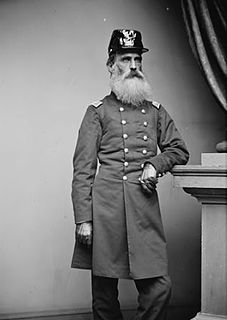 W
WSamuel Henry Starr was a career United States Army officer, regimental commander and prisoner of war. A collection of his letters provide a rare view of military life, the War with Mexico, Indian conflicts, the Civil War, his fall from grace, recovery and post Civil War service. Despite his rough demeanor he was a religious man and reflective of the times he served.
 W
WThe Battle of Stone Houses was a skirmish between Texas Rangers and a band of Kichai Indians which took place on November 10, 1837. The skirmish, which took place ten miles south of what is now Windthorst, Texas, was named for three stone mounds near the battlefield which appeared to the Indians to be small houses.
 W
WEdward H. Tarrant, for whom Tarrant County was named, served the Republic of Texas and the State of Texas by fighting hostile Indians for two decades. He also served in the Texas House of Representatives during both periods.
 W
WTosahwi, meaning White Knife, was a Penateka Comanche chief. He was deemed "cooperative" by William Babcock Hazen.
 W
WThe Trial of Satanta and Big Tree occurred in May 1871 in the town of Jacksboro in Jack County, Texas, United States. This historic trial of Native American War Chiefs of the Kiowa Indians Satanta and Big Tree for the murder of seven teamsters during a raid on Salt Creek Prairie near Jacksboro, Texas, marked the first time the United States had tried Native American Chiefs in a state court. The trial attracted national and international attention. The two Kiowa leaders, with Satank, a legendary third War Chief, were formally indicted on July 1, 1871, and tried shortly thereafter, for acts arising out of the Warren Wagon Train Raid.
 W
WThe Battle of Village Creek occurred on May 24, 1841, on the embankments of Village Creek. The battle, which evolved into a running gunfight between the Republic of Texas militia and the Village Creek tribes, was attributed to the increased Native American raids on Anglo settlements in the Red River counties.
 W
WWhite Horse was a chief of the Kiowa. White Horse attended the council between southern plains tribes and the United States at Medicine Lodge in southern Kansas which resulted in the Medicine Lodge Treaty. Despite his attendance at the treaty signing he conducted frequent raids upon other tribes and white settlers. Follower of such elders as Guipago, Satanta and old Satank, he was often associated with Big Tree, this one too a young war leader in the Kiowa nation.
 W
WThe Battle of Yellow House Canyon was a battle between a force of Comanches and Apaches against a group of American bison hunters that occurred on March 18, 1877, near the site of the present-day city of Lubbock, Texas. It was the final battle of the Buffalo Hunters' War, and was the last major fight involving the United States and Native Americans on the High Plains of Texas.